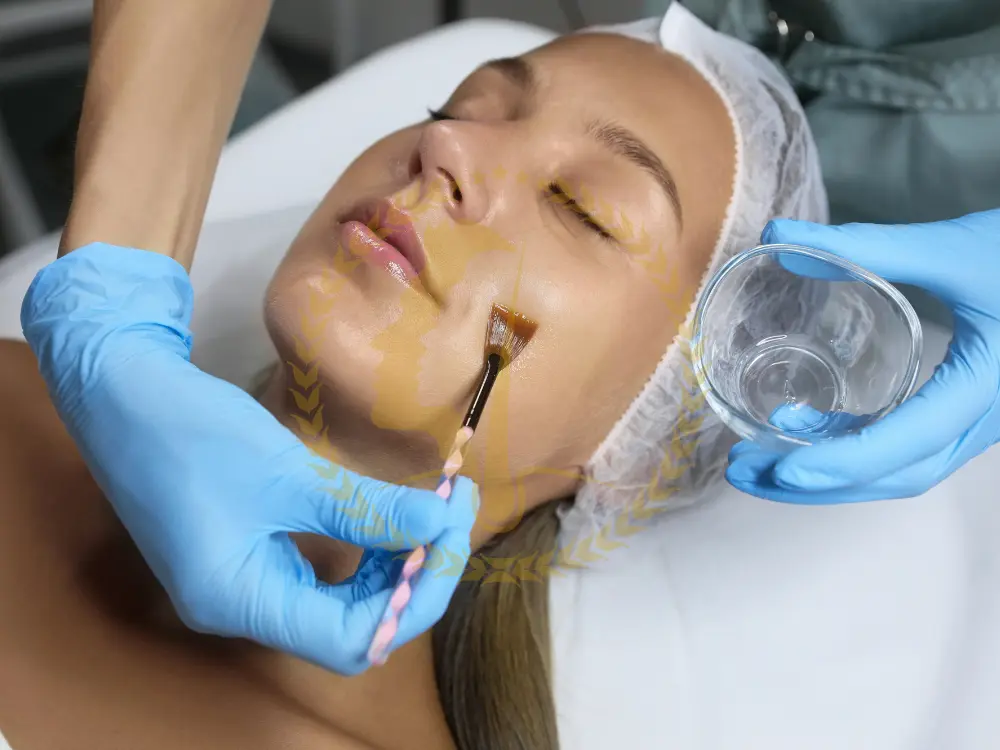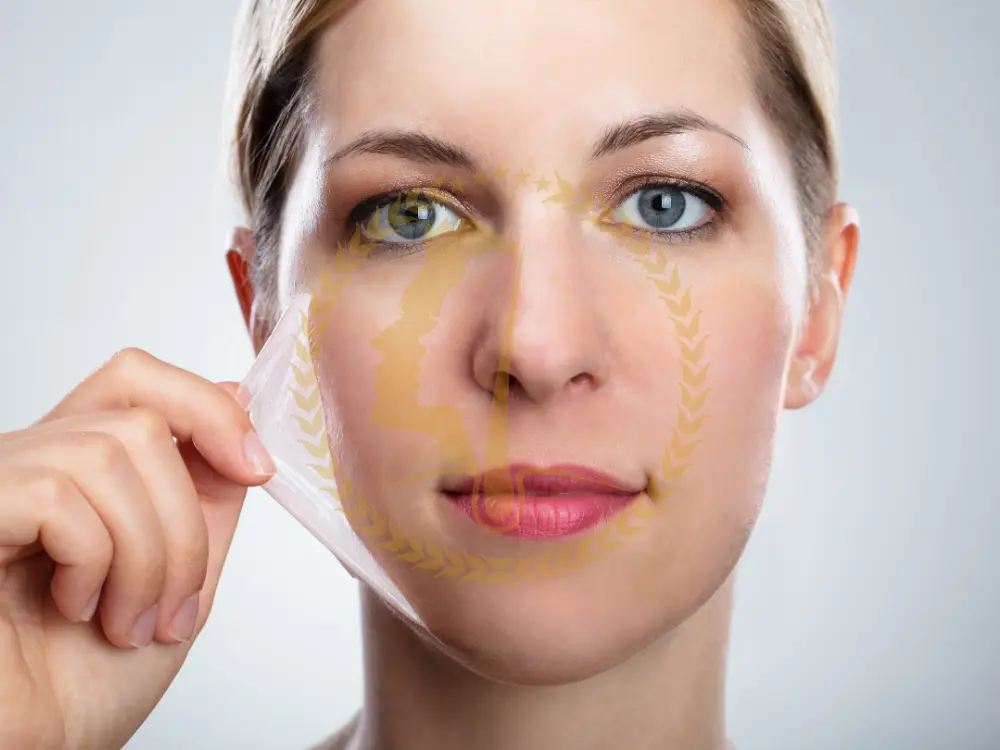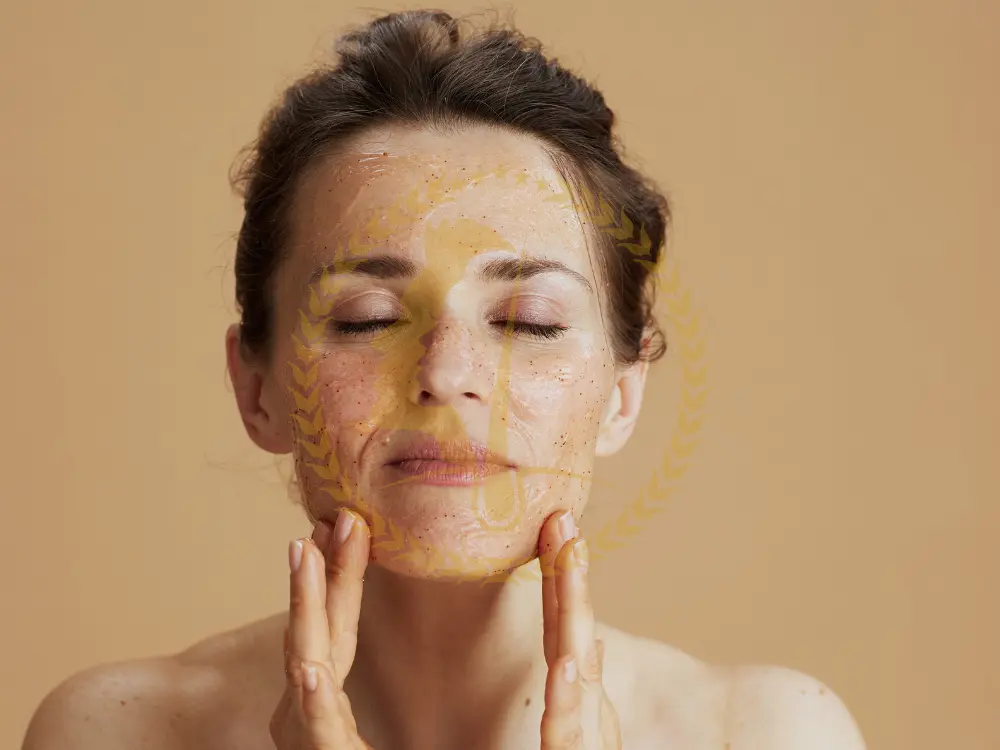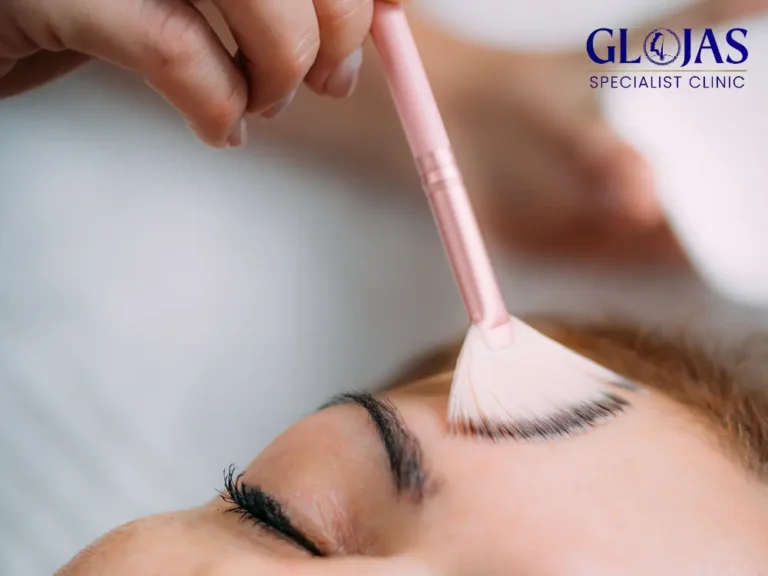Skin fading has become a popular topic for those looking to achieve a more even and radiant complexion. Whether due to hyperpigmentation, sun damage, or acne scars, uneven skin tone can be frustrating. Fortunately, several effective treatments can help you achieve the smooth, bright skin you desire. One such treatment is the chemical peel, a powerful option for skin fading that offers impressive results. In this article, we will explore everything you need to know about skin fading, including the benefits of chemical peels and other effective techniques.
The video features a customer from Kelantan undergoing acne treatment. The clinic starts her on an acne protocol, including a gentle chemical peel to improve her skin. During the session, the client expresses her readiness for the treatment, and the video provides a brief look at the process, accompanied by background music. The treatment is designed to address acne concerns, offering a solution for clearer and healthier skin. The atmosphere is professional, and the client seems comfortable throughout the procedure.
Understanding Skin Fading
Skin fading refers to the process of lightening dark spots, evening out skin tone, and reducing the appearance of blemishes or scars. This is achieved through various treatments and skincare products designed to inhibit melanin production, exfoliate the skin, and promote cell turnover. The goal of skin fading is to achieve a brighter, more uniform complexion.
Common Causes of Uneven Skin Tone
Uneven skin tone can be caused by various factors, including:
- Sun Exposure: Prolonged exposure to the sun’s UV rays can lead to sunspots, also known as age spots or liver spots, which are areas of hyperpigmentation.
- Hormonal Changes: Conditions like melasma, which is often triggered by pregnancy, birth control pills, or menopause, can cause dark patches on the skin.
- Acne Scarring: Post-inflammatory hyperpigmentation (PIH) occurs when acne lesions heal and leave behind dark spots.
- Aging: As we age, our skin’s ability to regenerate slows down, leading to an accumulation of dead skin cells that can cause a dull and uneven complexion.

7 Powerful Techniques for Skin Fading
1. Chemical Peels
Chemical peels are one of the most effective treatments for skin fading. This procedure involves applying a chemical solution to the skin, which exfoliates the outer layers and promotes the growth of new, healthier skin. There are different types of chemical peels, ranging from mild to deep, depending on the strength of the acids used and the depth of the peel.
- Alpha Hydroxy Acids (AHAs): These are the mildest form of chemical peels, typically using glycolic or lactic acid. AHAs are excellent for treating superficial pigmentation and improving overall skin texture.
- Beta Hydroxy Acids (BHAs): Salicylic acid is a common BHA used in chemical peels, particularly effective for those with oily or acne-prone skin. BHAs penetrate deeper into the pores, making them ideal for treating acne scars and deeper pigmentation issues.
- Trichloroacetic Acid (TCA): TCA peels are medium to deep peels that are more effective for treating significant hyperpigmentation, melasma, and sun damage. They require more downtime but offer more dramatic results.
2. Topical Skin Lightening Agents
Topical treatments are a common and accessible option for skin fading. These products often contain ingredients that inhibit melanin production, such as hydroquinone, kojic acid, or vitamin C. Regular use of these products can gradually fade dark spots and even out skin tone. It’s important to use these products as directed and to incorporate sunscreen into your routine to prevent further pigmentation.
3. Laser Therapy
Laser therapy is a high-tech option for those looking for more significant skin fading results. Lasers work by targeting and breaking down melanin in the skin, allowing the body to naturally eliminate the pigmented areas. Intense pulsed light (IPL) and fractional lasers are commonly used for this purpose. While effective, laser therapy can be expensive and may require multiple sessions for optimal results.
4. Microdermabrasion
Microdermabrasion is a non-invasive treatment that exfoliates the top layer of the skin using tiny crystals or a diamond-tipped wand. This process removes dead skin cells and stimulates collagen production, leading to a smoother and brighter complexion. Microdermabrasion is particularly effective for treating superficial hyperpigmentation and improving overall skin tone.
5. Retinoids
Retinoids, including retinol and prescription-strength tretinoin, are powerful skincare ingredients known for their ability to increase cell turnover. This increased turnover helps to shed pigmented skin cells more quickly, making retinoids an excellent option for skin fading. Additionally, retinoids help to reduce fine lines and improve skin texture, offering multiple benefits in one treatment.
6. Natural Remedies
For those seeking a more natural approach to skin fading, several home remedies can help lighten dark spots and even out skin tone. Ingredients like lemon juice, aloe vera, and turmeric have natural skin-lightening properties. However, it’s important to use these remedies with caution, as they can sometimes cause irritation, especially in individuals with sensitive skin.
7. Sunscreen
Sunscreen is perhaps the most critical component of any skin fading regimen. Sun exposure is a major cause of hyperpigmentation, and without proper protection, even the most effective treatments will be rendered useless. A broad-spectrum sunscreen with an SPF of 30 or higher should be applied daily, regardless of the weather, to protect the skin and prevent further dark spots.

The Benefits of Chemical Peels for Skin Fading
How Chemical Peels Work
Chemical peels work by applying an acid solution to the skin, which causes controlled damage to the outer layers. This damage triggers the skin’s natural healing process, leading to the shedding of old, pigmented skin and the emergence of fresh, new skin. The result is a brighter, more even complexion with reduced dark spots and improved texture.
Why Choose a Chemical Peel?
- Effective for Multiple Skin Concerns: Chemical peels not only fade dark spots but also improve skin texture, reduce fine lines, and treat acne scars, making them a versatile option for overall skin rejuvenation.
- Customizable Treatment: Chemical peels can be tailored to your specific skin concerns, whether you need a mild exfoliation or a deeper peel for more significant pigmentation issues.
- Minimal Downtime: While deeper peels may require some downtime, most chemical peels, especially superficial ones, have minimal recovery time, allowing you to return to your regular activities quickly.
- Long-Lasting Results: With proper care, the results of a chemical peel can last for months, especially when combined with a good skincare routine and sun protection.

FAQs About Skin Fading and Chemical Peels
1. How long does it take to see results from skin fading treatments?
Results can vary depending on the treatment used. Topical treatments and natural remedies may take several weeks to months to show noticeable results, while procedures like chemical peels or laser therapy can offer faster improvements, typically within a few weeks.
2. Are chemical peels safe for all skin types?
Chemical peels can be safe for most skin types, but it’s important to consult with a dermatologist to determine the best type of peel for your skin. Those with darker skin tones may need to be cautious with deeper peels to avoid the risk of post-inflammatory hyperpigmentation.
3. Can I combine different skin fading treatments?
Yes, combining treatments like topical agents with chemical peels or laser therapy can enhance results. However, it’s essential to do so under the guidance of a dermatologist to avoid over-irritating the skin.
4. How often should I get a chemical peel?
The frequency of chemical peels depends on the type and strength of the peel. Superficial peels can be done every 4-6 weeks, while deeper peels may be spaced out more, around every 3-6 months.
5. What should I expect after a chemical peel?
After a chemical peel, you may experience some redness, peeling, or flaking of the skin, depending on the strength of the peel. These effects typically subside within a week, revealing smoother, brighter skin.
6. Is sunscreen necessary after a chemical peel?
Absolutely. The skin is more sensitive to UV rays after a chemical peel, so applying sunscreen diligently is crucial to protect your skin and maintain the results of the treatment.
